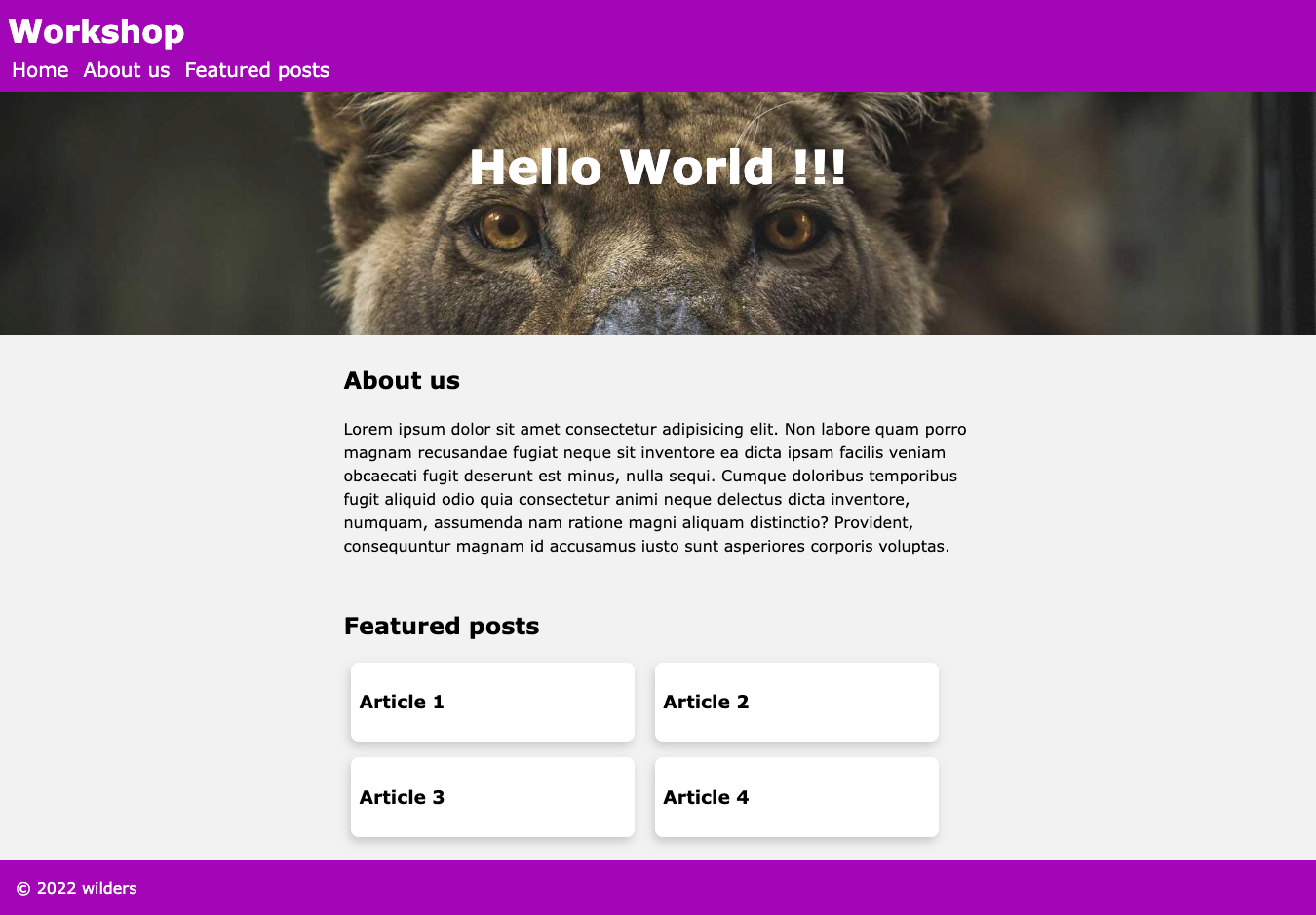HTML/CSS Basics workshop
Rules for this workshop: build and design a web page only with a semantic HTML structure (no class, no id in CSS).
Initialisation
- In a new folder, create an index.html file.
- Open the file with your favorite IDE and add the HTML5 basic tags (DOCTYPE, html, head, body).
- Create a style.css file.
- In the
<head>, first add some mandatory tags as<meta>or<title>:<head> <meta charset="UTF-8"> <meta name="viewport" content="width=device-width, initial-scale=1.0"> <title>CSS Workshop</title> </head> - Then add a
<link>tag with the link to style.css. - In index.html, in the
<body>, add a<h1>tag with the textHello world !!!. - In style.css, add the code:
h1 { color: #a306b6; } - Open index.html in your browser, and check that you can read the message: ‘Hello world !!!’ in WCS purple.
Good job !
Layout of your website
You will have to create a basic home page following the layout below (do not try to be pixel perfect, this image is just a guide, pink color is now replaced by purple).
Browsers have default size for each HTML elements (margin, font-size, etc.). It is useful but sometimes you will prefer to reset some default behaviour. In this workshop, it could be interesting to remove margin on <body>. Furthermore, use box-sizing: border-box on each element will help you to deal element sizing (more info about box-sizing).
* {
box-sizing: border-box;
}
body {
margin:0;
}
Navbar
- Try to reproduce the navbar. Start to create a
<nav>tag and add the background color#a306b6. - Then, analyse the navbar structure. You have a brand name “Workshop” at the top left and a group of menu items below.
- Using an unordered list can be a good idea for the menu group, but don’t forget to display it horizontally and without the bullets.
Header
- Wrap your
<h1>in a<header>tag and add a 250px min-height. - Add a background image (e.g a ramdon one on Loremflicker or Picsum).
- Center your main title and change font size / color if necessary.
Hint: Manage background size
“About us” Section
- Good practice is to wrap sections in a
<main>tag. - Add a first
<section>and a<h2>according to the template. - Add some fake text in a paragraph. Change
line-height(1.5) andfont-family(Verdana) to improve readability. This can be done in thebodyproperties. - Limit the
max-widthto 65ch. This will ensure you have a text width that does not exceed 85 characters making reading more comfortable.A little explanation: in css, the unit
chis a unit relative to the width of character 0 (the widest character in most fonts). Specifying 65ch allows us to ensure a column width of between 65 and about 85 characters for all signs combined, a text block width that is highly recommended by numerous studies on digital accessibility and our reading behaviour. More explanation on this article or this one if you are interested in the subject. - Finally, you can use the
marginproperty to center the block horizontally.
Centering in CSS: A complete guide
Featured posts Section
- Add a new section.
- Give it a
<h2>with the appropriated text content. - Add 4
<article>children below. - Each article might have
<h3>containing his name. - Adjust the layout to get 2 items per line with the
displayandwidthproperties. Rounding and drop shadow effects can be achieved withborder-radiusandbox-shadow.
Footer
Because you have a <header>, you need a <footer>. This should not be a problem for you 😉.
